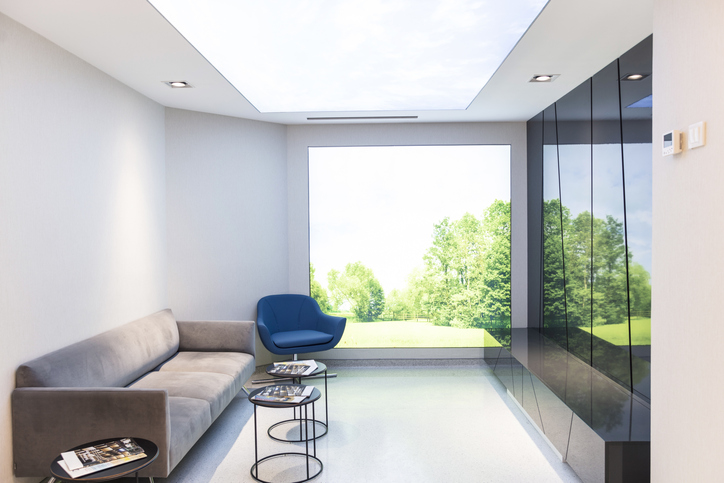A thread lift is a type of facelift surgery performed with minimal invasiveness. This treatment can improve facial sagging and restore a youthful appearance. However, some have reported persistent pain after the procedure.
This section details the causes of pain after a thread lift, as well as safe ways to care for it and what to expect during the procedure. The information is useful for those who are considering the procedure and those who are suffering from pain, as it is full of information to help reduce pain and achieve a comfortable recovery.

Graduated from the Faculty of Medicine, National Kumamoto University. After serving as the director of major beauty clinics in Japan, etc., he opened Aladdin Aesthetic Clinic in 2023. He is a professional in aesthetic medicine with a doctorate in anti-aging research and many years of experience. With the motto of "Toward the realization of cosmetic medicine without lies," he aims to be the "Only One" together with his patients.
What is a thread lift, a very popular procedure?

A thread lift is a procedure performed through minimal incisions and uses special threads that are inserted into the lower layers of the skin to lift sagging skin and lift the face. The threads are naturally absorbed by the body over time, making the procedure very low risk. The procedure usually takes less than an hour and allows patients to return to their daily routines immediately, making it an ideal option for today's busy people.
A thread lift can sharpen facial contours and improve lines and marionette lines. It also increases skin elasticity and restores a youthful appearance. The effects can be felt immediately after the procedure, and the final results appear several weeks later, allowing the patient to enjoy natural changes.
The main reasons for the growing popularity of thread lifts are their ease of use, safety, and long-lasting effects. First, the minimal downtime is a major attraction. Compared to regular facelift surgery, a thread lift has a very short recovery period, allowing patients to return to their daily activities immediately after the procedure. This makes the procedure easily accessible to people with busy lives and minimizes the social burden.
In addition, the thread lift is guaranteed to be safe, as the threads used are FDA-approved. These threads are made of a material that can be absorbed by the body and have very little effect on the body, so the procedure can be performed with peace of mind. Furthermore, the result of the procedure is a natural-looking result. Because they blend in with facial expressions and movements, it is difficult to tell from the outside that you have undergone the procedure, and because the changes in appearance are natural, you can achieve beauty without being noticed by others.
Finally, the long-lasting effects of thread lifts are another factor in their popularity. Typically, the effects of this procedure last from one to several years, and with proper care, it is possible to maintain a long-lasting, youthful appearance. Thus, the thread lift is an excellent option for modern people who are seeking long-term beauty while saving time and effort.
Know the downtime and recovery period for thread lift!

While thread lifts are known for their quick results and limited recovery period, proper expectation management is an important factor in enhancing the post-procedure experience. This section details the downtime and recovery period after a thread lift, common side effects, and rare but significant risks.
Downtime and recovery period
Thread lifts usually require very little downtime. Most patients are able to return to their daily activities immediately after the procedure, but a few days of light rest is recommended before a full return to society. Strenuous exercise and heavy lifting should usually be avoided for one week after the procedure.
It may also take several weeks to several months for the threads to fully acclimate to the skin and for the final effect to appear. Subtle swelling and discomfort may persist during this period, but should not significantly interfere with daily activities.
Side Effects and Risks
The most common side effects of a thread lift include swelling, redness, pain, and possibly minor bleeding. These symptoms usually resolve spontaneously within a few days after the procedure. Although very rare, serious complications have been reported with thread lifts, including infection, thread rejection, or thread migration. To minimize these risks, an experienced physician and proper postoperative care are essential.
Pain all the way after a thread lift! What causes the uncomfortable pain and what to do about it

Pain after a thread lift begins to be felt as the anesthesia wears off, especially in the area where the threads are inserted and the skin is lifted. In most cases, the pain will peak during the first three days after the procedure, but this pain will gradually lessen over time. However, if the pain persists for one to three weeks, it is recommended to consult the clinic where the procedure was performed.
Areas prone to pain and the reasons why
| part | Characteristics of pain | Possible Causes |
|---|---|---|
| Temples and scalp | Throbbing pain for several days after treatment | Due to inflammation |
| Near cheekbones | Dull pain occurs | Due to spines when the thread pulls up the skin |
| inside the mouth | Pulling sensation and pain when smiling | Indirect effects of pulling up the skin around the mouth |
Certain areas are more likely to be painful during a thread lift procedure, and it is important to understand why and how to deal with them. The temples and scalp, the cheekbone area, and the inside of the mouth are the main target areas.
The temples and scalp are the primary areas where the threads of the thread lift are inserted and may experience throbbing pain due to inflammation, especially for several days after the procedure. This area is very delicate and requires special attention because touching the wound increases the risk of bacterial infection.
In the cheekbone area, spines are used to pull up the skin with the threads. Because of this, until the threads are fully acclimated, massage and facial training may cause a dull pulling sensation. This pulling sensation is temporary and will gradually lessen over time.
Although the inside of the mouth is not directly affected by the procedure, it is indirectly affected by pulling up the skin around the mouth. This may cause a pulling sensation and pain, especially when smiling, but this pain will diminish as the threads acclimate. However, pain may persist if the threads are not properly placed, and in such situations appropriate treatment in the clinic is required.
Understanding pain in these areas and proper aftercare are key to maximizing the effects of a thread lift and minimizing discomfort.
Coping with pain
Even though a thread lift is a relatively safe medical procedure, the pain felt during downtime is unavoidable, if not absent. However, with proper care and coping strategies, pain can be significantly reduced. Below are some practical coping strategies for managing pain after a thread lift.
|
|
|
Based on these measures, the downtime of a thread lift can be made more comfortable. With proper care and following the clinic's guidance, pain will gradually diminish, allowing you to experience the full benefits of the procedure.
summary
Although thread lifts are known to be an effective anti-aging treatment, they can cause pain after the procedure. Understanding the causes and countermeasures for pain described in this article and taking proper care of yourself will help you manage the pain. In addition, proper care before and after the procedure will help ensure safer and more satisfactory results. If you are considering a thread lift, please use this information to discuss your treatment with a trusted physician.
At Aladdin Aesthetic Clinic, based on our many years of experience in cosmetic medicine and cosmetic dermatology and the knowledge of our doctoral degree, we provide counseling that aims to be "only one", offering the best treatment for each person we meet. We offer only the necessary treatments without any unnecessary information or suggestions.
Feel free to use our official LINE account for 24-hour counseling and reservations. Please feel free to contact us for free counseling for the first time or if you have any concerns.






